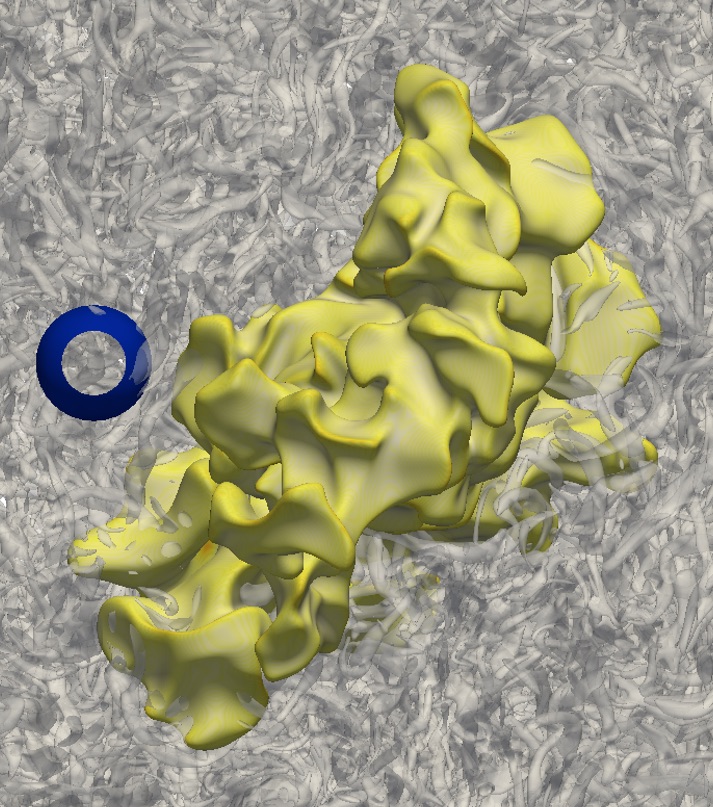Cycle-to-cycle variations in gasoline engines are particularly dependent on the early combustion phase. For turbulent combustion, the influence of turbulence on the global behavior of mixing and combustion is typically deterministic as a result of the interactions of many individual processes, which results in a statistically predictable behavior. However, the flame kernel initiated by the spark is small, in the very early combustion phase about the size of the large turbulent scales, and is not in equilibrium with the turbulence. Therefore, the evolution of the early flame kernel is dominated by local, stochastic small-scale fluctuations. Due to the strongly non-linear nature of the interaction of turbulence and flame, this can lead to significant changes in the later combustion process or even to immediate extinction. Especially, the influence of strong intermittent turbulent fluctuations with low probability, and the stochastic character of the young non-equilibrium turbulence typical for engines, are beyond the common modeling approaches based on conventional turbulence theory and are not reflected in current models. In this project, the aim is to contribute to the understanding of the causes and fluid-mechanical indicators of cyclic variations. The influence of the anisotropic turbulence and small-scale intermittency in the engine on the early flame propagation is to be investigated and considered in the models to be developed.

Figure 1. Iso-surfaces of temperature (with arbitrary color scale) and the second invariant of the velocity gradient tensor (grey background) for an early flame kernel using DNS. The diameter of the blue circle in the figure indicates the turbulent integral length scale.
For this purpose, direct numerical simulations (DNS) of idealized engine geometries as well as large eddy simulations (LES) of the port-injected gasoline engine experiments from TP 1 are to be carried out. DNS will initially be performed for a simplified engine geometry with local inhomogeneities of both temperature and mixture composition due to exhaust gas recirculation and direct injection. Ensemble-DNS will provide results for a large number of individual flame kernels allowing for statistical analysis and targeted backward analysis. The resulting data will be analyzed using dissipation element statistics. A parametrization derived from the backward analyses performed for the DNS data is the basis for model development, which further uses the universal distribution functions from the dissipation element analysis. DNS data for partially premixed combustion will be used by TP 5 for model development. Models will be validated in LES of the experimental configuration of TP 1. An essential element of this project is the coordinated backward analysis of the cyclic variations, which will be based on the results of the LES and which will be jointly carried out with TP 1. To support the development of models describing the initiation of engine knock in TP 7, 2D-DNS of turbulent auto-ignition will be performed and jointly analyzed with TP 7.
Contact:
Univ.-Prof. Dr.-Ing. Heinz Pitsch office(at)itv.rwth-aachen.de
Hongchao Chu h.chu(at)itv.rwth-aachen.de